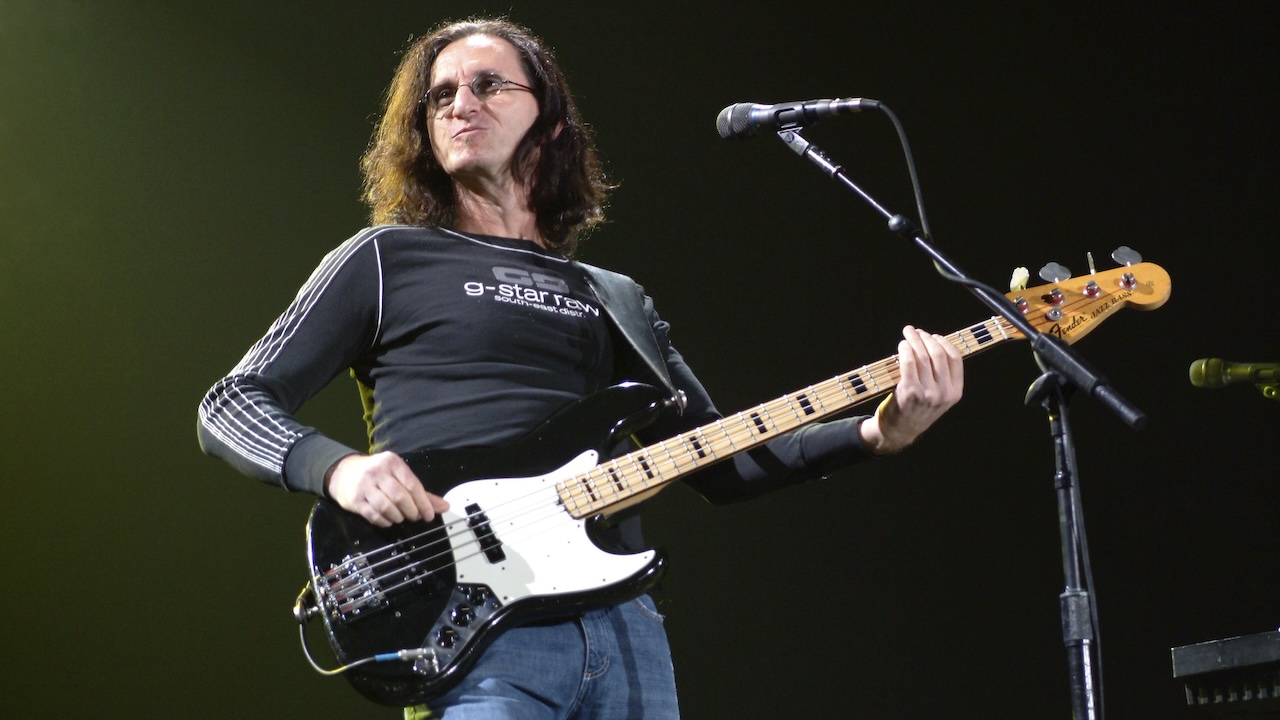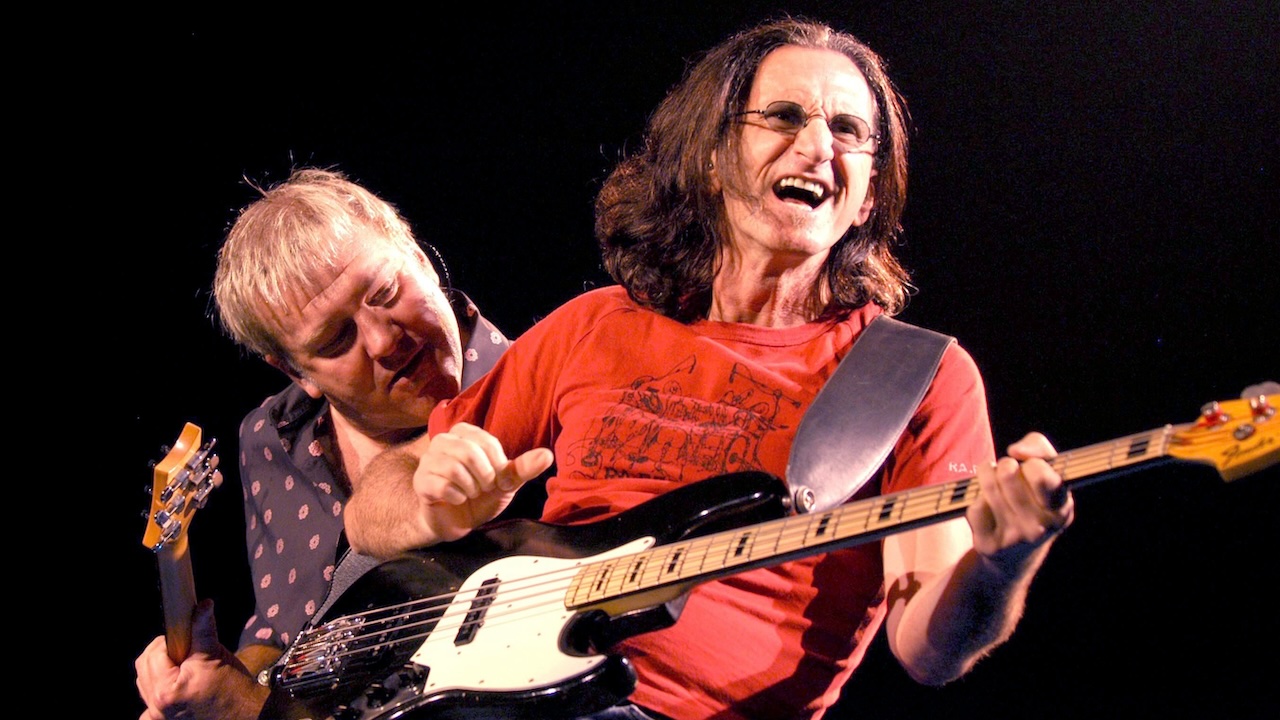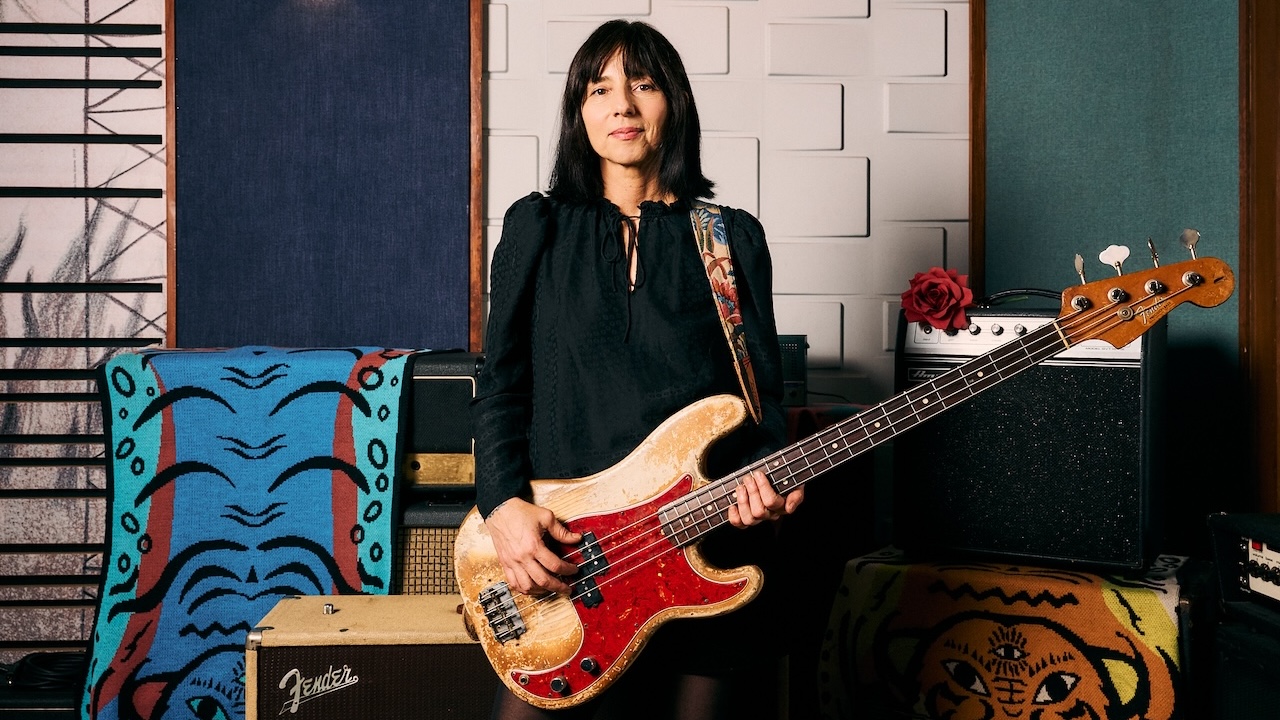“It was the first kind of ‘bass solo’ I’d been allowed to throw on a Rush song. I wanted to trade off with Alex, but he didn’t want to get into that”: Geddy Lee offers his track-by-track guide to Vapor Trails – the album that saved Rush
After a six-year absence from the recording studio, Vapor Trails redefined Rush’s career

When you've been recording nearly an album a year since the mid '70s, how do you come up with something fresh? Try taking five years off. That's what Geddy Lee and Rush did before getting back together in 2001 to record Vapor Trails, the band's 17th studio album.
In the down time, Lee remained musically active by producing local artists in Toronto and recording a solo album, 2000's My Favorite Headache. Far from stagnating, he evolved significantly as a bassist. “My bass playing has gone into such a weird zone,” Lee told Bass Player in 2002. “I’ve carried that on to a ridiculous degree.”
Lee developed a rhythmic, often chordal style that worked well with a layered approach. “I'm strumming a lot, and sometimes I end up with two or three bass tracks on each song. Rather than wait for a guitar part to fill in a melody, I'll just go up the neck, fuzz out my bass, and have it perform that function.”

All over Vapor Trails, it seems Geddy went out of his way to avoid playing roots. “I think that's from the way I use bass chords: The roots are implied without necessarily having to be emphasized. Sometimes we miss that, though, so I'll go back in and add a lower bassline that grounds the part. But if it's not necessary, we live without it.”
Rush recorded Vapor Trails digitally using Emagic Logic Audio software. Most of the songs were born out of jams recorded direct to disc, many of which made it all the way into the final mixes. “People say digital is this sterile medium, but they don't understand what it can do for you. You can get a very recordable sound and just jam into the computer, and then manipulate it afterward.”
For every bass performance, Geddy recorded three tracks: One direct through an Avalon U5 preamp/DI, one from the U5 through a Palmer speaker simulator for low-end distortion, and one from the U5 through a Tech 21 SansAmp RBI, the rack-mount version of the SansAmp Bass Driver. Before being recorded, each track went through a vintage Neve preamp/EQ and a Urei 1176 compressor.
Geddy Lee's following track-by-track tour of Vapor Trails took place in the July 2002 issue of Bass Player.
All the latest guitar news, interviews, lessons, reviews, deals and more, direct to your inbox!
1. One Little Victory
“This song began as a series of guitar experiments Alex did. One night he stayed late and laid down some ferocious, bluesy playing, but it didn't sound much like a song. I waited for an interesting piece of lyric to come along, and that gave me an idea to go in and start playing with Alex's riffs. In my digital world I selected the parts I thought were strongest and began jamming to them on bass.
"Some of them started coming to life, so I reshaped them digitally according to the attitude I thought would work for the lyrics. With the bass, I just tried to fill the gaps inspired from the riffs. I generally tried to keep it moving and bluesy.”
2. Ceiling Unlimited
“About four months into our writing sessions we took a month off, and when we came back we jammed for a couple of weeks. Those were some of the most inspired jams I've ever had with Alex – we played a lot of out-there things that just jelled, including the basis for this tune.
“The choruses seemed to groove better when I was up in a high register, but we were missing the bottom end as the song went out. So in each successive chorus, I added a lower octave of bass. The first chorus has one high bass, the second has the same line doubled in a midrange register, and the last chorus has three octaves of bass – so the song keeps getting bigger as it rolls along.
“It also features the first kind of ‘bass solo’ I've been allowed to throw on a Rush song. I wanted to trade off with Alex, but he's very anti-guitar solo at the moment, so he didn't want to get into that.”
3. Ghost Rider
“In the verses and pre-choruses we had a natural connection between the lyrics and Alex's part, but finding the right atmosphere for the chorus was a bitch of a job. I think I wrote 11 or 12 different choruses until I got something that satisfied us emotionally and musically.
“Ghost Rider ended up being one of my favorite songs on the record. Bass-wise, the verses have my original jam parts where I'm playing a chordal thing; then I went back in and added a lower bassline.
“If we play this one live, I'll have to determine what's important. Bass chords create an interesting sound on record, but I don't think they're necessary live, so I drop a lot of the chording and stick to the bottom. That often translates better. I may go back and forth between the two, which gives us an opportunity to create interesting dynamics.”
4. Peaceable Kingdom
“This was originally supposed to be an instrumental, but our producer Paul Northfield thought it was so strong that it would be a shame not to exploit it more. The lyric seemed to fit the hot, burning chordal patterns Alex and I had come up with for the tune.
“The song opens with a combination of bass chords and guitar chords that blend into one sound. Then we break away into the Peaceable Kingdom sections, and I slip into a Jack Bruce-like riff and jam the blues. It's harmonically very interesting for me. I'd like to play this one live, but I'm not sure if we can pull it off without all the vocal harmonies.”
5. Stars Look Down
“This started with Alex and me just riffing together in a funky way. When we hit the chorus, everything changes: I go into a fingerpicking bass-chord pattern, with three or four chords that circle around. He joins me at the end of the song, doing the same thing on nylon-string acoustic, which makes for an interesting orchestration.”
6. How It Is
“This song fell together easily; the melody just popped out of my mouth and worked well with the lyric. But every time we tried to ‘produce' it, we lost something, so we decided it was best to go back and work with the original jams that inspired the melody.
“Alex added some mandola in the beginning and middle, but overall this tune was a ‘jam to disc.’ I just tried to find the busiest, angriest bass riff for the verses – a bit over the top – to contrast the choruses' sweet, melodic nature.”
7. Vapor Trail
“I wrote the melody around a bass pattern that was glued to one of Alex's guitar jams – a sweet, repetitive arpeggio. This tune reminds me of some of our older material: There's a repetitive guitar part that hardly changes, and the only melodic movement is coming from the bass part underneath.
“It's kind of a lonely tune with a real mood, so I wanted to mix the tune with a deeper, less twangy-sounding bass guitar. We ended up using less of the SansAmp in the mix. This tune has two bass parts: One is playing in a lower register, and a high-end figure repeats subtly in the background.”
8. Secret Touch
“This is a bit of an extravaganza. We built the song around these repeating bass chords that I thought sounded like French horns. The tune has a hypnotic feel, and because we weren't happy just enjoying that feel, we had to smack it up with some power.
“When we get to the middle section and all hell breaks loose, there are these stuttering bass punctuations. I double-tracked them, but on one of the tracks I went in and digitally truncated the notes to make them sound really punchy.
“There's another point where I'm playing straight 16th-notes, and when we were jamming originally, we could hear the sound of my fingers slapping against the string but when we played it back it didn't have the same ‘smack.’
“So we put up a mike and recorded the sound of my fingers while we were laying down the parts, and we used it subtly in the mix. I don't know how much of it survived under all the guitars, but it's there.”
9. Earthshine
“This was fairly straight-forward – Alex and I jammed on a riff, and then halfway through, I added a lower bassline to provide more rumble. When we hit those Celtic-like pre-chorus sections, it's basically a combination of two bass parts: a low part and a chordal part. You can really hear the extra basses come and go on this one.”
10. Sweet Miracle
“Bass-wise, this is one of the simpler songs – sadly, only one bass track! It began with the verses; I'm playing chords, I wrote the melody along with those chords, and then Alex added his parts to that.
“For certain songs where the lyrics are atmospheric and require just the right mood, there's no option but to just write a vocal melody and shape the bass chords around that melody.”
11. Nocturne
“I'm very pleased with how this one turned out; we stretched out a bit. I had my three bass channels assigned to three outputs on the console, but for some reason, during the verses I accidentally routed one of the channels to the wrong output, and it came up on a rail normally reserved for a vocal track.
“There was this deep reverb on it, and it sounded so cool – so we wrote the song around that sound. Then during the middle section, there's one low bass part, one bass-chord part, and a third part that's echoing into that reverb.”
12. Freeze
“We were dying to work in some screwed-up time signature because we hadn't done that in a while, so we came up with a jam that was in seven. But then I got the idea to digitally form the jam around the song's lyrics. The more I played with it on the computer, the weirder the time got.
“I decided the bass and guitar should be repetitive and hypnotic, but I threw out any rules for the time signature: I shaped the time of each verse section to the number of beats I needed to fit in the vocal properly. That's why it's hard to count that song – there aren't any rules as to when a beat is dropped or added. The middle section is a bass-and-guitar jam, which we left virtually as is.”
13. Out Of The Cradle
“This began as a simple rock tune; a number of basslines come in off the top to set the mood, with chords playing off each other in a dynamic way. If I were a piano player, those would have been piano parts – but since I'm a bassist and we were trying to use as little keyboard as possible, I had the bass perform that role.”
Karl Coryat was Deputy Editor of Bass Player magazine in the 1990s. In the 2000s, he wrote two music books: Guerrilla Home Recording and The Frustrated Songwriter’s Handbook, the latter with Nicholas Dobson. In 1996, he was a two-day champion on the television game show Jeopardy!. He works as a comedian and musician under the pseudonyms Edward (or Eddie) Current.
![RUSH 30th Anniversary Tour - One Little Victory [HD] - YouTube](https://img.youtube.com/vi/IftQ6gaCi7M/maxresdefault.jpg)












